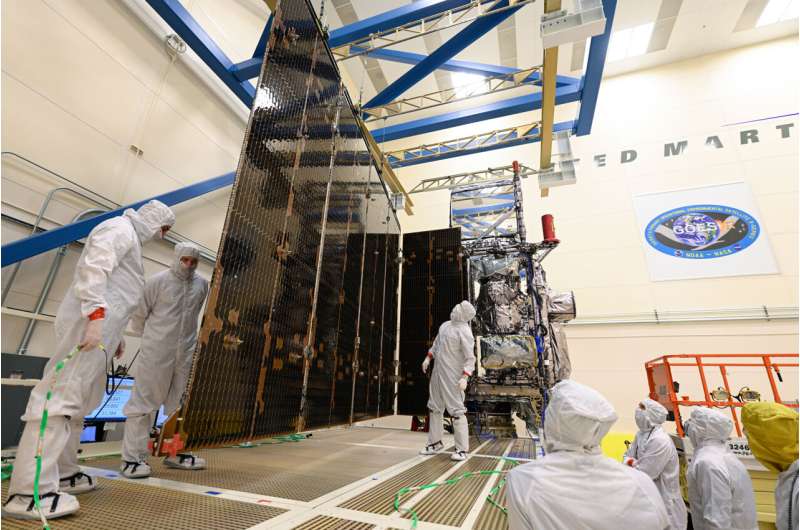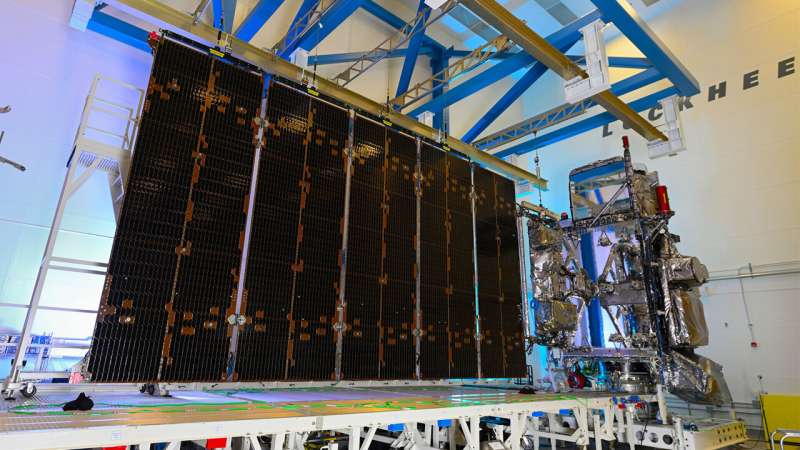This is equivalent to the power needed to run a central air conditioning system in your home.
The solar array was developed and built at Lockheed Martin in Sunnyvale, California, and tested at Lockheed Martin's facility in Littleton, Colorado, where the spacecraft was assembled.

The solar array deployment was the latest in a series of rigorous tests GOES-T recently completed to prepare for its upcoming launch. GOES-T also underwent vibration, acoustic, and shock testing. These tests ensure the satellite can withstand the harsh conditions of launch and properly function in orbit 22,236 miles above Earth.
GOES-T is on track for a December 2021 launch from Cape Canaveral Air Force Station in Florida. The satellite will be renamed GOES-18 once it reaches geostationary orbit. After GOES-18 completes on-orbit checkout of its instruments and systems, NOAA will consider the health and reliability of the overall GOES observing system before deciding whether GOES-18 will reside in on-orbit storage or go immediately into operational service.
NOAA's GOES-R Series satellites comprise the Western Hemisphere's most advanced weather-observing and environmental-monitoring system. The GOES-R Program is a four-satellite mission that includes GOES-R (GOES-16, launched in 2016, and operational as NOAA's GOES East), GOES-S (GOES-17, launched in 2018, and operational as GOES West), GOES-T, and GOES-U (planned for launch in 2024).
The satellites provide critical data for weather forecasts and warnings, detection and monitoring of environmental hazards like fire, smoke, fog, volcanic ash, and dust, and monitoring of solar activity and space weather.
The GOES-R Series satellites are planned for operation into the 2030s. Meanwhile, NOAA is beginning work on the next-generation geostationary mission called GEO-XO. GEO-XO will continue the observations provided by GOES-R and bring new capabilities to address major environmental challenges of the future in support of U.S. weather, ocean, and climate operations.
The GOES-R and GEO-XO programs are collaborative efforts between NOAA and NASA. NASA builds and launches the satellites for NOAA, which operates them and distributes their data to users worldwide.
Explore further



